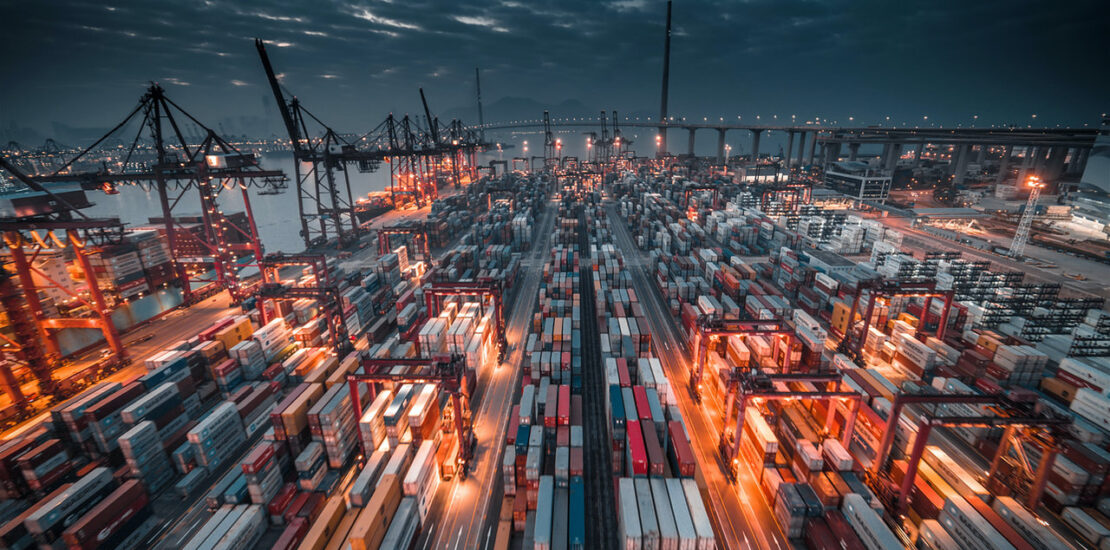Reconfiguration of Supply Chains & India’s Role?
- January 4, 2024
- Posted by: Anish
- Category: Feed

Evolving global supply chains have made the movement away from China to countries like Vietnam, Mexico, and India a topic of growing significance. This shift is influenced by a complex interplay of factors, ranging from economic considerations to geopolitical tensions.
It is essential to understand that this shift is not a wholesale displacement of China but a dynamic reconfiguration of global supply chains. The reconfiguration is driven by a combination of economic and geopolitical factors, offering companies diverse options to optimize their supply chains. The initial driving force behind supply chains moving out of China were rising labour costs, particularly in labour-intensive and cost-sensitive industries like textiles. However, geopolitical factors started to play a more explicit role from 2018, with the imposition of tariffs on Chinese exports by former US President Trump and growing concerns about geopolitical conflicts.
However, China’s role in global supply chains is evolving, enabling this reconfiguration. This process has been facilitated by an increase in Chinese exports and investment. Importantly, the Chinese businesses are adapting by relocating and optimizing their operations, reducing costs in the process.
Supply chains for some of the most labour-intensive and cost sensitive industries like textiles have already been moving out of China since the mid-2010s. This shift was almost purely driven by China’s rising wages, which have eclipsed worker remuneration in Southeast Asia and countries like Bangladesh and India.
China’s share of US imports peaked at 21.6% in 2017, dropping to 16.7% by 2022, and to around 14.6% in the 12 months to July 2023. Concurrently, alternative production bases like Mexico, Vietnam and India have appreciably increased their shares of the US/West export market.
India’s Role in Global Value Chains:
India has in recent years expressed a clear intention to expand its role in global manufacturing and trade, aiming to emerge as a viable alternative to China. This strategic shift has been emphasised by Finance Minister Nirmala Sitharaman, who highlighted India’s plans to incentivise production and bolster its domestic consumer market.
The ongoing trade tensions between China and the United States have created an opportunity for India to position itself as an alternative manufacturing hub.
The government under Prime Minister Narendra Modi has undertaken substantial infrastructure development initiatives and focused efforts on bolstering the logistics sector. These endeavours are seen as pivotal steps to establish India as a manufacturing nucleus.
Multinational corporations, including industry giants like Walmart and Apple, are increasingly directing their attention towards India, gradually reducing their reliance on China, a country entangled in trade disputes with the US and engaged in border conflicts with India.
The country has implemented several reforms, including the liberalisation of Foreign Direct Investment (FDI) norms, the introduction of the Production-Linked Incentive (PLI) scheme, opening up previously restricted sectors like defense and manufacturing, and making adjustments to labour laws. These measures aim to challenge China’s dominance in manufacturing.
In addition to incentive-based programs like PLI, there is a growing call for increased allocation of funds towards upskilling and vocational training in the upcoming Budget. Strengthening skills required for emerging sectors will be pivotal for the next phase of manufacturing growth.
India is expected to contribute over 16 percent of global growth as economic reforms in key sectors like infrastructure and digitalisation have made India a “star performer” among countries, as per the International Monetary Fund (IMF).
India’s economy has bounced back significantly from the COVID-19 pandemic and is now a key driver of worldwide growth, as per the report. Employment has surpassed pre-pandemic levels, with the informal sector dominating. The IMF noted that GDP growth hit 7.2 percent in FY23, driven by the pandemic-induced surge in global demand for outsourcing, service export growth in FY23 reached its highest point in a decade, leading to an increase in net exports.
Easing inflation in developed countries, softening interest rates, a gradual pick up in global demand and other factors will provide a silver lining for the country’s exports and the overall outbound shipments are expected to be more than USD 900 billion in 2024.
A stable rupee against the US dollar, focus on new markets like Latin America and Africa, new items like mobiles and fresh fruits, focus on promoting e-commerce exports, free trade agreements with the UAE and Australia would also help the country register healthy growth in outbound shipments next year.
Electrical and electronics, machinery, automobile and auto components, high tech products, pharmaceuticals, medical and diagnostic equipment exports are likely to go further in 2024.
But as India’s share in world trade is just 2 per cent, focus on enhancing sectoral competitiveness in labour intensive sectors and diversification of services sectors can surprise us with some good export performance.
The target of increasing MSME share in exports to at least 60 per cent in the next five years and this can be met by tapping into the potential in sectors like readymade garments, leather goods, processed foods, and engineering items for export to BRICS and G20 nations.
“However, the major challenge is to sustain this growth momentum. This is all the more important in view of the USD 2 trillion export target for both goods and services by 2030. Going forward, India needs to further step up its efforts to bring more products under Quality Control Order (QCOs) as this would enable our MSMEs to get integrated into Global Value Chains (GVCs), a major vehicle to boost exports.
The Indian government under PM Modi has taken several measures to promote India’s export and that includes announcing new Foreign Trade Policy; promoting districts as export hubs; providing more funds to the Interest Equalisation Scheme on pre- and post-shipment rupee export credit; financial assistance under Trade Infrastructure for Export Scheme (TIES) and Market Access Initiatives (MAI) Scheme; and increasing role of Indian missions abroad.
Learn more: Cialis
Learn more: Viagra Super Active
